I sometimes use a non-traditional piecing technique and when I’m finished, I have a beautifully embellished quilt block, pillow front, or background for a mini art quilt. This one is made of 2 ½” squares, which can be tedious when stitching square to square to make rows, and then stitching the rows together, all the while trying to perfectly match all the corners. This technique eliminates the frustration of making sure your piecing is exact. It is very forgiving and if your stitching is not precisely perfect, it will still look beautiful. If you piece the traditional way to make this square, you’ll piece four squares for each of the four rows, for a total of 15 seams – for one block! To make the embellished block you will stitch only six seams.
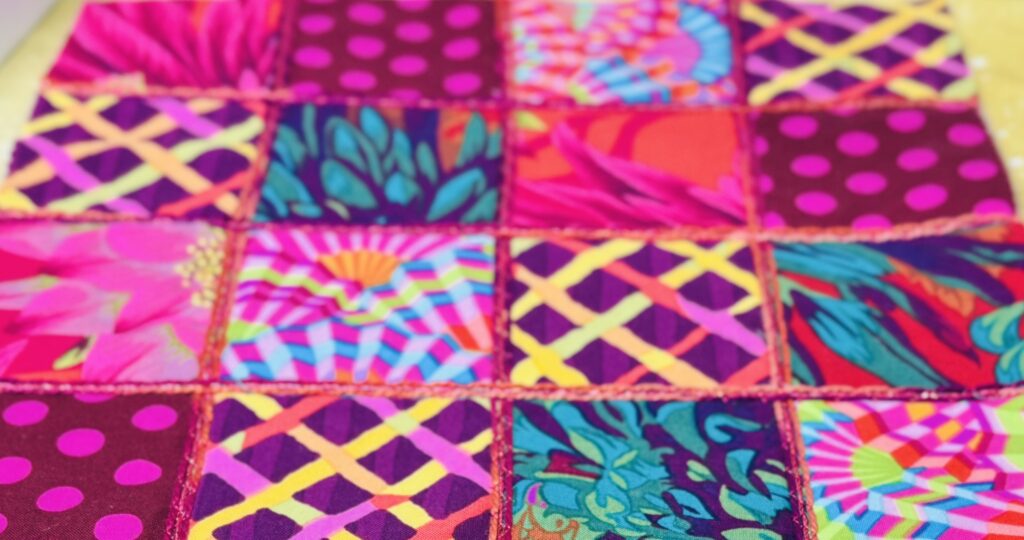
Supplies for One 10” block
- Sixteen 2 ½” squares – I used some Kaffe Fasset fabrics leftover over from a previous project.
- One 10” square of low loft batting – I used Warm N White. You may want to cut an 11” square of batting that gives you some “wiggle room” for placing your squares on it. After stitching the squares, you trim the batting to be even with the fabric edges.
- Heavy decorative thread – I used 2 different types.
- A cord-like variegated thread from Wonderfil – about 10 yards – cut into two 5-yard pieces
- A metallic thread that I have had for so long that the label is gone and I’m not sure what brand it is. Wonderfil has a similar called Dazzle that’s perfect for this technique. You’ll need 5 yards of this one.
- Temporary Spray Adhesive
- Stiletto – use this to keep the fabric edges flat as you stitch over them. Once you sew the three vertical lines, you won’t need it for the remaining three lines.

Presser Foot
You need a couching foot that holds narrow cords or heavy decorative thread side by side so you can stitch over them. I use BERNINA Cording Foot #22. It has three grooves so it can hold three cords/thread. There is a second option, Cording Foot #25. It is the same as Foot #22 except that it has 5 grooves, which are more narrow. The maximum stitch width of these feet is 5.5 mm.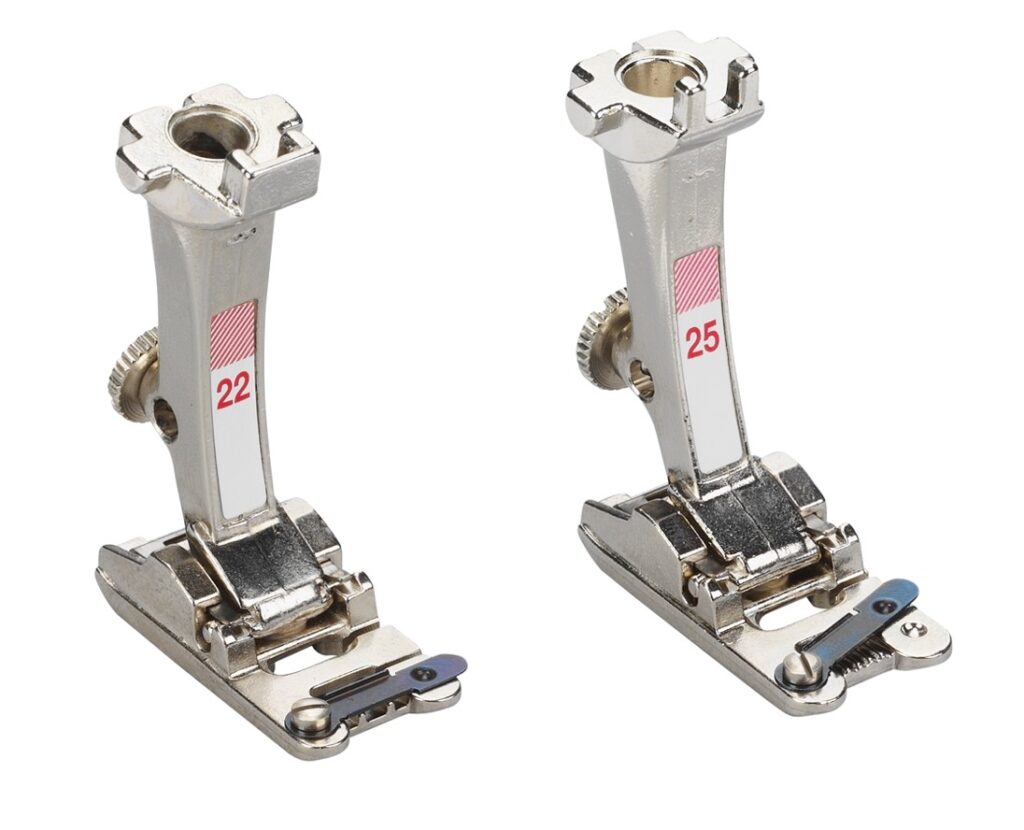
Placing the Squares
Spray the batting with temporary spray adhesive. Place the squares as desired, making sure they are side by side. The edges should meet but not overlap.

Preparing to Stitch
Tie a knot at one end of the three cords to hold them together. Open the black “gate” on the foot. Place the cords in the front slot on the right edge of the foot. Pull the knotted cords to the back behind the foot. Position the cords as desired in the grooves and the close the gate.
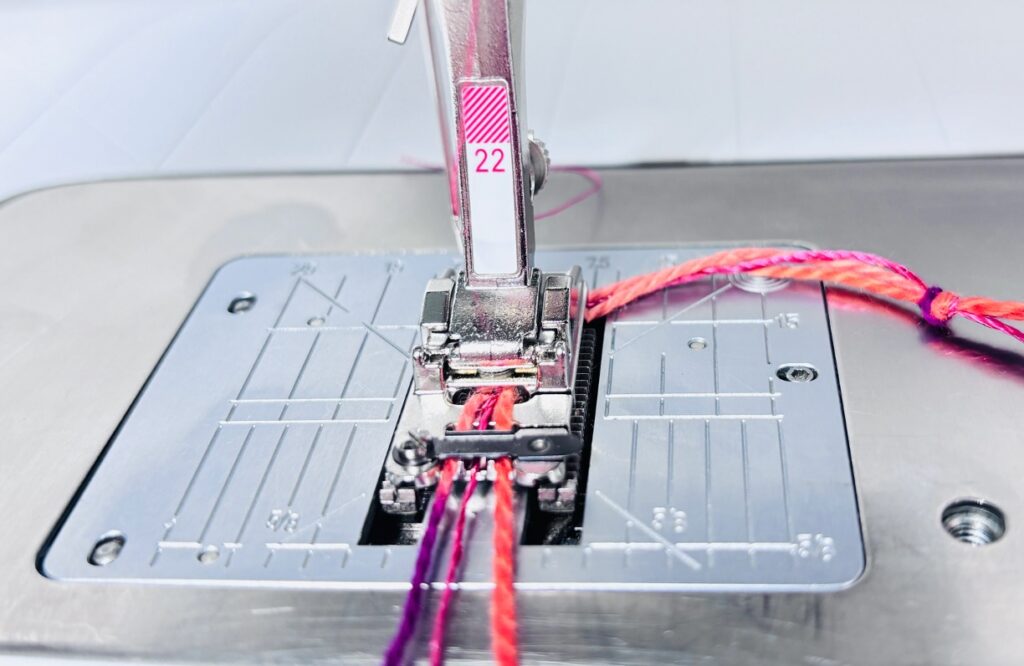
Select the 3-step Zigzag Stitch (#16 on most BERNINA machines) and adjust the length to 1.75 mm. Another stitch that works well for this is the Honeycomb Stitch #8. Almost any side-to-side stitch will work, depending on the look you want so play with them to see what you like.
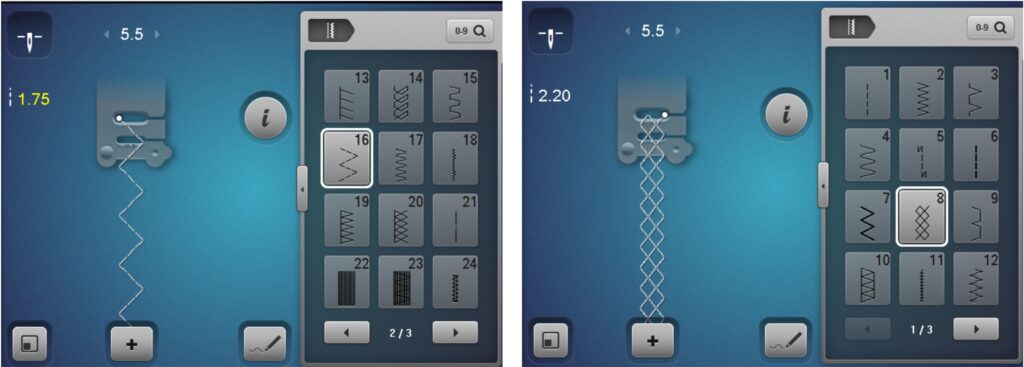
Couching the Seams
Position the center of the foot on one of the three vertical seam lines. Use a stiletto to keep the raw edges flat as you stitch. Repeat with the remaining two vertical seams. Then stitch the horizontal seams. Trim the block edge if needed.
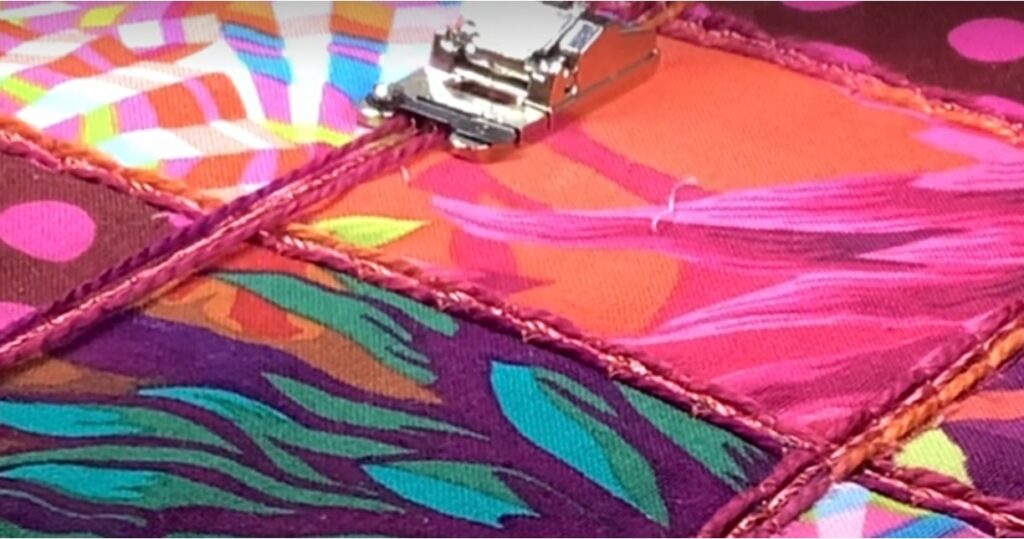
I love the clean structure of a grid and the added texture makes it even better. Here’s the finished block.
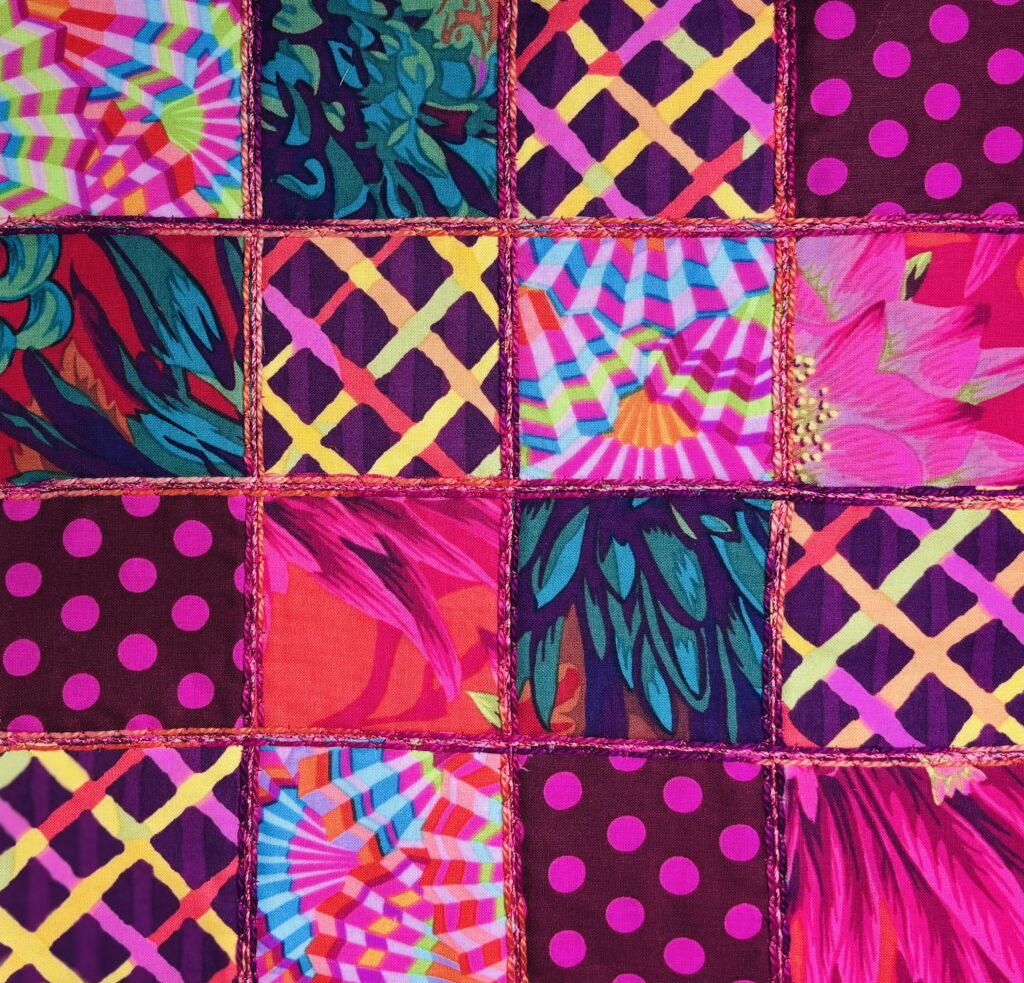
And, here’s a few more quilt blocks made using the same technique. 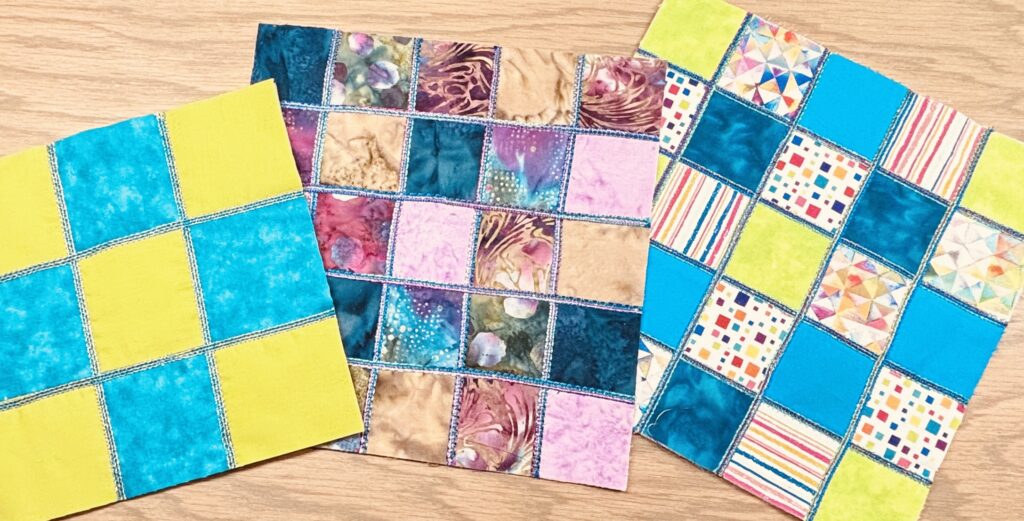
Hope you try this fun and pretty quilted block. As always,


